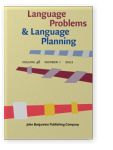Vol. 46:1 (2022) ► pp.78–98
How learning Toki Pona may help improving communication strategies in a foreign or second language
This article aims to explore the possibility that learning Toki Pona, a “minimalist” constructed language with a total lexicon of only 123 words, may help students to develop their skills in using communication strategies in the foreign or second language they are learning. After a general introduction on constructed languages, three sections follow: one introducing Toki Pona, one presenting the research hypothesis and aim, and another outlining communications strategies. The article continues with the methodology employed and a discussion of the results obtained. These show that learning Toki Pona may indeed help the students to improve their communication strategies, and particularly circumlocution, so that they can avoid breakdowns in communication when they do not know or do not remember a word or expression.
Article outline
- Introduction
- Characteristics of Toki Pona and why people learn it
- Research hypothesis and aim
- Communication strategies
- Methodology
- Results and discussion
- Conclusions
- Ethical declaration
- Acknowledgments
- Notes
-
References
